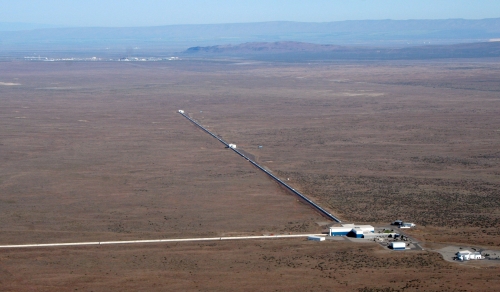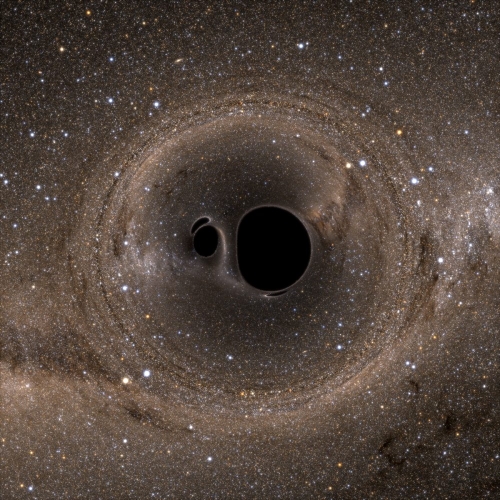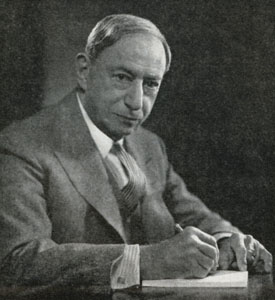"Einstein would be beaming," said National Science Foundation director France Córdova as she began this morning's news conference announcing the discovery of gravitational waves. I can hardly disagree, because we have in this discovery yet another confirmation of the reality of General Relativity. Caltech's Kip Thorne, who discussed black hole mergers way back in 1994 in his book Black Holes and Time Warps, said at the same news conference that Einstein must have been frustrated by the lack of available technologies to detect the gravitational waves his theory predicted, a lack that it took a century to remedy with the LIGO collaboration.
Thorne believes that if he had been armed with the right tools, Einstein himself would have made the detection. But of course the tools weren't there. Somehow that thought produced an odd echo of the very decade of General Relativity's emergence, one that shows how much GR changed the nature of our view of the universe. It was in 1911, just four years before Einstein published GR, that Hugo Gernsback started talking about gravitational waves. The future editor of Amazing Stories, the first true science fiction magazine, Gernsback published his novel Ralph 124C 41+ in 1911, in a magazine called Modern Electrics.
Here's how, in the era just before General Relativity, Gernsback handled gravitational waves, as our hero Ralph ponders his latest device:
It was known that certain high frequency currents would set up an interference with the gravitational waves, for it had been found in the first part of our century that gravitation was indeed a wave form, the same as light waves, or radio waves. When this interference between the two waves, namely, the gravitational waves and the electrical waves was discovered, it was found that a metallic screen charged by electric high frequency waves would indeed nullify gravitation to a certain extent...
And so on. Gernsback did his best (and at all too great a length), but how could his predictive powers have coped with gravitational waves? After all, his era was used to dealing with electromagnetic phenomena. General Relativity would stipulate a gravitational radiation which, like the electrical waves he mentioned, travels through space at the speed of light. But gravitational waves are themselves distortions -- ripples -- in spacetime itself. Finding gravitational waves means we have found yet another successful test of General Relativity in a kind of radiation different from any Gernsback could have imagined.
At Last, the Discovery
As fluctuations of expanding and contracting spacetime, we can think of gravitational waves as the movement of squeezed and stretched space. Accelerating bodies should produce these ripples, but only the largest events -- a supernova explosion, a pair of infalling neutron stars, or even the collision between two black holes -- should be sufficient to produce waves we can detect. The Laser Interferometer Gravitational-Wave Observatory (LIGO) experiment has been looking for these waves for more than a decade, with an upgraded Advanced LIGO in place since last September and far more sensitive than its predecessor.

Image: An aerial view of the Laser Interferometer Gravitational-wave Observatory (LIGO) detector in Livingston, Louisiana. LIGO has two detectors: one in Livingston and the other in Hanaford, Washington. LIGO is funded by NSF; Caltech and MIT conceived, built and operate the laboratories. Credit: LIGO Laboratory
LIGO has been searching for gravitational waves since 2002, involving the work of some 1000 scientists. Its laser interferometer apparatus, installed at stations in Hanford, Washington and Livingston, Louisiana, takes advantage of the fact that a passing gravitational wave should change the apparatus itself, shrinking or expanding the space between two objects.
A single laser beam is split into two, with the twin beams being sent on different paths perpendicular to each other down vacuum channels four kilometers long, bouncing off mirrors in the process and eventually recombining, still aligned. A gravitational wave passing through the experiment should be able to change the distance of the two paths, meaning that the beams are no longer in alignment -- they no longer cancel each other out. The changes amount to no more than a tiny fraction of the width of an atomic nucleus but they have proven detectable.
A Date to Remember
Now we know that the first gravitational waves were detected on September 14, 2015 at 5:51 a.m. EDT (09:51 UTC) at both LIGO sites. The amalgamation of a black hole 36 times the mass of our Sun and another of 29 times solar mass has evidently created a Kerr black hole (one that is spinning) of 62 solar masses. The missing 3 solar masses are thought to have been converted into energy and released as gravitational waves in a fraction of a second, with a peak power output, according to this NSF news release, about 50 times that of the whole visible universe. The Livingston detector recorded the event 7 milliseconds before Hanford picked it up.
The two black holes collided some 1.3 billion years ago, in an area of the sky that can be only imprecisely determined because we have no more than the two detecting sites. Nonetheless, Gabriela Gonzalez (LSU), a spokesperson for the LIGO collaboration, was able to point to the southern sky in the region of the Large Magellanic Cloud. Bear in mind that we have help on the way -- the Italian VIRGO interferometer, which will come close to LIGO sensitivity later this year, and detectors in progress at the Japanese Kamioka Gravitational Wave Detector (KAGRA) and another detector in the works at LIGO-India (which could be operational by 2022). And remember that the Laser Interferometer Space Antenna (LISA) Pathfinder, launched in December, has now reached L1.

Image: Simulation of two merging black holes in front of the Milky Way. Scientists said the Sept. 14 event was so intense that in the moment before the colliding black holes swallowed each other, they emitted more energy than the rest of the universe combined. Credit: SXS Collaboration.
Toward a New Astronomy
We are, in other words, about to enter the era of gravitational wave astronomy. We've already learned as of this LIGO detection that binary black holes do exist, and that they can merge. A proven method of detecting gravitational waves should lead to our learning the signatures of different astronomical phenomena. Just how different is hard to ascertain, because as the oft-made comparison with Galileo's first instrument reminds us, unexpected things turn up whenever we start looking with new tools. Gravitational waves provide us with a way of seeing into the earliest moments of the universe. And they're certainly our way into violent processes like black hole and neutron star mergers and supernova explosions. Thus we move beyond electromagnetic wavelengths -- visible light, X-rays, infrared -- into a new era.
"At optical wavelengths," Kip Thorne told the news conference, "we can see the universe as a calm place, like looking at the ocean on a quiet day. But on September 14, all that changed. Now we see an ocean of crashing waves, as black holes create a violent storm in the fabric of space and time." Thorne went on to speak of the kind of detections that will be possible as gravitational wave astronomy advances, including not only the black holes, neutron stars and supernovae previously mentioned, but the possible detection of cosmic strings reaching across the cosmos, created by the process of inflation in the earliest moments of the universe.
"With this discovery," adds Thorne, "we humans are embarking on a marvelous new quest: the quest to explore the warped side of the universe -- objects and phenomena that are made from warped spacetime. Colliding black holes and gravitational waves are our first beautiful examples."
The temporal distance between Gernsback's first novel and Einstein's General Relativity was four years. The distance between GR and gravitational wave detection was a century, a span of time in which the foundations of General Relativity have become part of the fabric of basic scientific literacy. A useful thought experiment is to put ourselves back in that pre-GR era and ponder just how dramatic the conceptual change that Einstein wrought must have been.
An Antiquarian Thought Experiment

The thought experiment is a way of seeing how preconceptions can be overturned dramatically, which is why I sometimes return to creaky old stories like Gernsback's Ralph 124C 41+. It's a famous novel in the annals of science fiction but only a turgid read. Brian Aldiss once described it as a "tawdry illiterate tale," and its author evidently viewed its plot as little more than an on-ramp for his real purpose, describing futuristic technical marvels.
Gernsback was no Einstein, but then, who was? He was an inventor, a publisher with a large stable of magazines whose contributions to science fiction were large enough to have resulted in the annual Hugo awards being named for him. He was also famous for paying his writers very low fees (H. P. Lovecraft would call him 'Hugo the Rat'). Few science fiction fans today have read Ralph 124C 41+, but that early 20th Century gusto for sweeping predictions about technology drew impetus from the book, energizing the nascent but energetic genre.
Image: Portrait of magazine publisher Hugo Gernsback(1884-1967) by Fabian Bachrach (1917-2010). Credit: Wikimedia Commons.
Today's science fiction, with all its sub-genres, takes General Relativity as a starting point for what comes next even as it continues to poke at how the theory might be extended in ways useful both to science and to plot. It's just possible that we'll find something through gravitational wave astronomy within the next hundred years that is as wildly out of kilter with current thinking as General Relativity was in its day. We didn't abandon Newtonian physics when we moved on to GR, we simply placed it in a wider context. Open a new portal into the universe and things happen. We can only wonder what science -- and science fiction -- will look like a century from now.
Today's paper is "Observation of Gravitational Waves from a Binary Black Hole Merger," Physical Review Letters 116 (11 February 2016) 061102 (full text). See also this useful backgrounder from the American Physical Society's online journal Physics : Berti, "Viewpoint: The First Sounds of Merging Black Holes," (full text).

